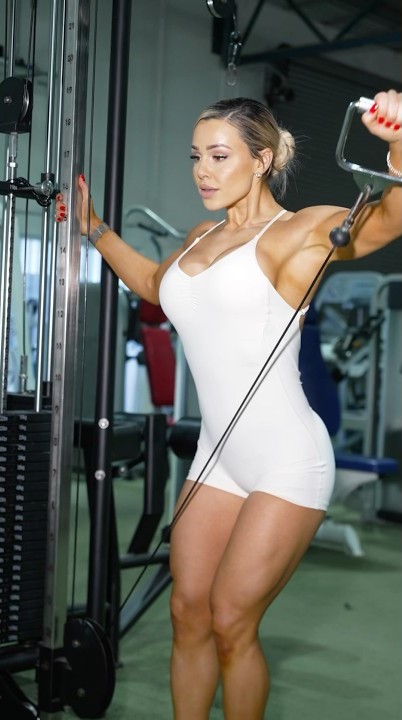Strong buttocks are not only aesthetically pleasing, but they are also essential for functional movement, posture, balance, and athletic performance. The buttocks are made up of three primary muscles: the gluteus maximus, gluteus medius, and gluteus minimus. Together, these muscles help with hip movement, support the lower back, and stabilize the pelvis. Whether you want to enhance your appearance, improve performance in sports, or reduce back pain, targeting your glutes through exercise is a smart move. This article explores the best exercises for strong buttocks, how to perform them, and tips for getting the most out of your workout.

1. Why Strengthen the Buttocks?
Before diving into the exercises, it’s important to understand the benefits of strong glutes:
- Improved posture: Strong glutes help support the spine and prevent slouching.
- Better athletic performance: Strong buttocks contribute to running, jumping, lifting, and climbing.
- Reduced risk of injury: Strengthening the glutes helps stabilize the hips and knees, lowering injury risk.
- Lower back support: Weak glutes can cause compensation in the lower back, leading to pain.
- Aesthetics: Firm, lifted buttocks improve the shape and tone of the lower body.
2. Best Bodyweight Exercises for Strong Buttocks
If you’re just starting or don’t have access to gym equipment, bodyweight exercises are a great way to build glute strength.
1. Glute Bridges
How to do it:
- Lie on your back with knees bent, feet flat on the floor.
- Keep arms at your sides, palms down.
- Push through your heels to lift your hips off the floor, squeezing your glutes at the top.
- Lower back down and repeat.
Benefits: Targets gluteus maximus and strengthens the hips and lower back.

2. Donkey Kicks
How to do it:
- Start on all fours with hands under shoulders and knees under hips.
- Lift one leg up, keeping the knee bent at 90 degrees.
- Kick the foot upward toward the ceiling, squeezing your glute.
- Lower and repeat on both sides.
Benefits: Great for isolating the gluteus maximus and improving hip mobility.
3. Fire Hydrants
How to do it:
- Begin on all fours.
- Keeping the knee bent, lift one leg out to the side like a dog at a fire hydrant.
- Return to the starting position and repeat.
Benefits: Engages gluteus medius and minimus, improving lateral hip strength and stability.

4. Squats
How to do it:
- Stand with feet shoulder-width apart.
- Lower your body by bending your knees and pushing your hips back.
- Keep your chest up and knees behind your toes.
- Return to standing and repeat.
Benefits: A full lower-body workout that heavily targets the glutes, especially with deep squats.
3. Resistance Band Exercises for Glutes
Resistance bands are inexpensive and portable, making them perfect for glute-focused training.
5. Banded Lateral Walks
How to do it:
- Place a resistance band around your thighs or ankles.
- Get into a half-squat position.
- Step sideways in one direction for several steps, then reverse.
- Keep constant tension in the band.
Benefits: Strengthens the gluteus medius and improves hip stability.

6. Banded Glute Bridges
How to do it:
- Perform a regular glute bridge with a band around your thighs.
- Press your knees outward to keep the band tight as you lift your hips.
Benefits: Adds resistance and intensifies glute activation.
4. Weighted Exercises for Stronger Glutes
Adding weight to your glute exercises increases resistance, leading to greater muscle growth and strength.

7. Barbell Hip Thrusts
How to do it:
- Sit on the floor with a bench behind you and a barbell across your hips.
- Roll the barbell over your hips and lean your upper back on the bench.
- Thrust your hips upward, squeezing your glutes.
- Lower back down and repeat.
Benefits: One of the best exercises to target and grow the glutes.
8. Deadlifts
How to do it:
- Stand with feet shoulder-width apart and a barbell in front of you.
- Bend at the hips and knees to grasp the bar.
- Lift the bar while straightening your legs and back.
- Squeeze your glutes at the top, then lower the bar back to the ground.
Benefits: Works the entire posterior chain, including hamstrings and glutes.

9. Bulgarian Split Squats
How to do it:
- Stand with one foot behind you on a bench.
- Lower your body into a lunge position, keeping the front knee behind the toe.
- Push up through your front heel.
- Repeat on both legs.
Benefits: A unilateral (single-leg) exercise that deeply engages the glutes and helps correct imbalances.
5. Plyometric Exercises for Explosive Glute Strength
Plyometrics add a cardio element and improve power.
10. Jump Squats
How to do it:
- Perform a regular squat, then explode upward into a jump.
- Land softly and go directly into the next squat.
Benefits: Builds explosive strength in the glutes, legs, and calves.
11. Skater Hops
How to do it:
- Jump from side to side like a speed skater.
- Land on one foot, then hop to the other side.
- Keep your chest up and core engaged.
Benefits: Targets glutes and improves balance and agility.
6. Stretching and Recovery
Strong glutes require rest and flexibility. Always include stretches to avoid tightness.
- Figure Four Stretch
- Pigeon Pose
- Hip Flexor Stretch
- Foam Rolling
Stretching after workouts reduces soreness and maintains hip mobility, which is essential for strong and functional buttocks.

7. Tips for Building Strong Buttocks
To maximize your results:
- Train 2–3 times a week: Focus on quality movements with proper form.
- Progressive overload: Gradually increase resistance or reps to challenge the muscles.
- Mind-muscle connection: Focus on squeezing your glutes during every rep.
- Nutrition matters: Eat enough protein to support muscle growth.
- Rest and recover: Muscles grow during rest, not during the workout.
8. Conclusion
Building strong buttocks is about more than appearance—it’s about strength, stability, and function. Whether you use bodyweight movements, resistance bands, or heavy weights, consistency and good form are key. By incorporating a variety of exercises such as glute bridges, squats, hip thrusts, and deadlifts, you can target every part of the glutes and see powerful results. Pair your training with proper stretching, good nutrition, and rest, and your efforts will lead to a stronger, healthier lower body—one step (and squat) at a time.



